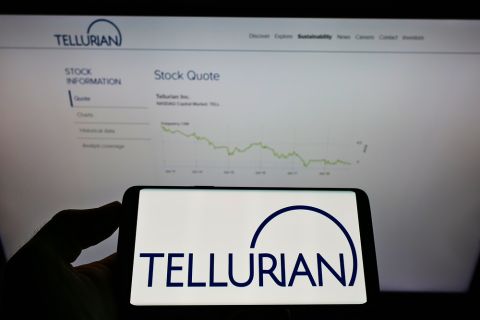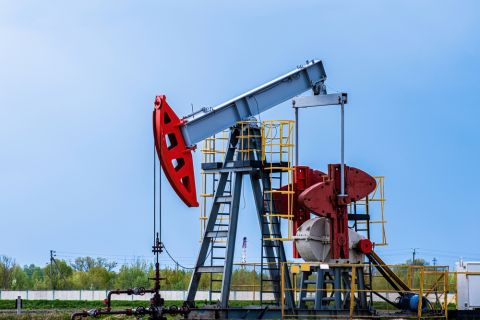Many independents had good reason to celebrate their performance this summer. Strong M&A activity, continued high commodity prices, a nation hungry for more resources and an investment community keenly to everything energy have all helped the group finish strong-though there is trepidation about how long the good fortune can last. All 38 of the companies on the Oil and Gas Investor This Week scoreboard reported revenue growth as compared with second-quarter 2004; nine experienced production dips. The biggest gainers in revenue were Ultra Petroleum Corp., Chesapeake Energy Corp. and Range Resources Corp. at 138%, 82%, and 74%, respectively. Though there were no losers, The Houston Exploration Co. came in last at 2% revenue growth. As for growth in oil and gas output, Ultra and Chesapeake were on top again at 84% and 42%. Kerr-McGee Corp. and XTO Energy Inc. followed closely at 37% each. Ultra is poised to drill around 150 wells this year in the Pinedale Anticline in Wyoming, Sterne Agee & Leach Inc. notes, as the Wyoming Oil and Gas Conservation Commission approved the company's request for five 10-acre pilot programs on the Pinedale acreage. "Ten-acre downspacing in the Pinedale could ultimately give Ultra more than 6-plus trillion cubic feet equivalent of net reserves on the Pinedale Anticline and could provide the company with drilling inventory well through the decade," Sterne Agee reports. It had a Buy on the stock with a target price of $40. To Deutsche Bank analyst Jay Saunders, Chesapeake's success during the quarter was no surprise. "Second-quarter numbers were, to us, a microcosm of the Chesapeake story with solid drillbit performance, acquisitions adding to inventory, significant reserve replacement, and margin expansion amid a low operating-cost structure. While reserve addition costs-both drillbit and acquisitions-are rising, aggressiveness has been rewarded in this price environment and deals have provided an enviable inventory." CHK shares were up 40% this summer versus 22% for the group, he adds. "Acquisition prices may give some reason for pause, but we believe Chesapeake's aggressiveness will be rewarded, given drilling success, cost containment, a near decade-long prospect inventory, and flexibility with rig management against strong gas prices." Saunders had a Buy on the shares. As for Kerr-McGee, Saunders says investors will recognize its success-if they can see beyond boardroom activities that grabbed the spotlight during the quarter. "Amid all the noise of pending asset sales, potential IPOs, share repurchases and debt additions, Kerr-McGee reported a quality second quarter that showed signs of improvement on the E&P side of the house." The company has reported positive reserve replacement and solid production numbers, yet "one quarter is not enough to generate too much enthusiasm," he adds. "We are going to stick on the sidelines right now with a Hold rating in anticipation of asset sales that should give a better indication of what the go-forward entity will look like." The company will have more to prove as the Rockies takes a larger role in its portfolio, he adds. XTO, the other production-growth winner, is another favorite among analysts. Its joint ventures and asset deals gave it plenty to work with, and spending increases and confident production targets show that the company is "wasting little time getting to work on its new goodies," Saunders says. "The company is well-positioned within the new world order of costs and prices in the energy sector. As a deep bench of prospects gets deeper, evidenced by Piceance and Permian deals, XTO continues to put its money to work as a 7% increase in 2005 spending to $1 billion follows the 10% increase at the end of the first quarter and hints that drilling economics remain robust. "Importantly, increased spending applies to some more activity rather than only paying higher bills, although that is certainly part of it." Morgan Stanley's Lloyd Byrne says XTO's second-quarter results were largely in line with expectations. He raised his second-half guidance for production, capex and operating costs. "While the latter may concern the market, cost pressures are prevalent across the E&P space," he says. "Moreover, XTO continues to enjoy a sizeable operating margin/reserve cost advantage over its peers. The company's multi-year drilling inventory provides above-average production visibility, in our view. "If the stock remains relatively weak as the market digests updated cost guidance, we would use this as a buying opportunity." He had an Overweight-V and a $40 price target on the stock. Futures-market prices for crude oil were higher a sixth consecutive quarter, notes Hannah Mumbly, a research analyst with London-based research firm Evaluate Energy. An added sign that producers are flourishing is M&A activity that marked the second quarter. "As the high oil price shows no sign of abating, companies are increasingly prepared to pay the high asset prices," Mumbly says. Chevron paid more than $19 billion in its offer for Unocal; Devon Energy entered agreements to sell more than $2 billion for U.S. and Canadian properties; EnCana Corp. reached a deal to sell all of its Gulf of Mexico interests to Statoil for US$2 billion; BG sold its 16.67% interest in the North Caspian for $1.8 billion; Noble Energy acquired Patina Oil & Gas for $1.7 billion; Occidental Petroleum bought interests in the Permian Basin from ExxonMobil for $972 million; and Pogo Producing Co. sold Thailand assets to Mitsui Oil Exploration for $820 million. (For more on recent M&A activity, see "U.S. M&A" in this issue.) Among the 38 independents, liquids production dropped quarter-on-quarter by about 1% and some 3% when compared with first-quarter 2004, Mumbly reports. For some independents with significant production improvements, acquisitions played a key role. For those that took a hit, it was often tied to divestitures. "Noble Energy's 30% increase in production was due to the inclusion of Patina Oil & Gas; Kerr-McGee's 25% increase is a consequence of its Westport Resources acquisition and the start up of production in Bohai Bay, China; EnCana's 14% decrease resulted from its sale of properties in the Gulf and western Canada; and Anadarko's 12% decrease is due to property disposals associated with the company's refocused strategy." Gas production for the group jumped quarter-on-quarter nearly 2%, data indicate. Nearly all 38 independents in the group have reduced their total debt/equity ratios. "Cash flow continued to be abundant for the majority of oil companies, with a growth rate...of 25% on a quarter-to-quarter basis," Mumbly reports. "Companies have been looking at where to spend this cash and, in line with previous quarters, many of them are still choosing to buy back shares. Some of this cash has also gone into increasing capital expenditures as operating expenses increase." Some Gulf of Mexico producers may be unable to have good second-half 2005 results due to platform and other facility destruction by Hurricane Katrina. "The energy industry's recovery effort post-Katrina finally appears to be making some headway," says JP Morgan's E&P analyst Shannon Nome. "However, the resumption of production is proving to be much more plodding than that which followed Hurricane Ivan one year ago, due to more major logistical issues. We think it will take months, not weeks, to resume full production, and do not expect 'full' to amount to more than 90% of pre-storm levels when all is said and done." E&P stocks outperformed the broader market in the wake of Katrina, she adds. "Not surprisingly, the shares of most Gulf-oriented producers have underperformed since Katrina made landfall, while the group's leaders have been more onshore-oriented and less-hedged, by and large." In the midst of increasing concerns about rising natural gas prices, Saunders advises investors to hang tough. His buys in early September included Apache Corp., XTO Energy Inc., Newfield Exploration Co. and Noble Energy Inc. "Demand-growth slowdown is a concern, and it will happen (already in the Midwest), but the gas price is going to be too strong to ignore. We would focus on attractive valuation (Apache and Newfield), low-cost exploiters (XTO) and transitional stories that look ripe for delivery (Newfield and Noble)."
Recommended Reading
Exxon, Chevron Beat 3Q Estimates, Output Boosts Results
2024-11-01 - Oil giants Chevron and Exxon Mobil reported mixed results for the third quarter, with both companies surpassing Wall Street expectations despite facing different challenges.
Souki’s Saga: How Tellurian Escaped Ruin with ‘The Pause,’ $1.2B Exit
2024-09-11 - President Biden’s LNG pause in January suddenly made Tellurian Inc.’s LNG export permit more valuable. The company’s July sale marked the end of an eight-year saga—particularly the last 16 months, starting with when its co-founder lost his stock, ranch and yacht in a foreclosure.
Mexico Pacific Working with Financial Advisers to Secure Saguaro LNG I FID
2024-10-23 - Mexico Pacific is working with MUFG, Santander and JP Morgan to arrange the financing needed to support FID and the anchor phase of Saguaro Energía LNG.
Quantum Raises $10B for Oil, Gas, Midstream, Energy Transition
2024-10-29 - Quantum Capital Group raised $5.25 billion for its private equity flagship, Quantum Energy Partners VIII. A source told Hart Energy that most of the firm’s capital has gone into oil and gas because it offers the best risk-adjusted returns.
Private Producers Find Dry Powder to Reload
2024-09-04 - An E&P consolidation trend took out many of the biggest private producers inside of two years, but banks, private equity and other lenders are ready to fund a new crop of self-starters in oil and gas.
Comments
Add new comment
This conversation is moderated according to Hart Energy community rules. Please read the rules before joining the discussion. If you’re experiencing any technical problems, please contact our customer care team.




